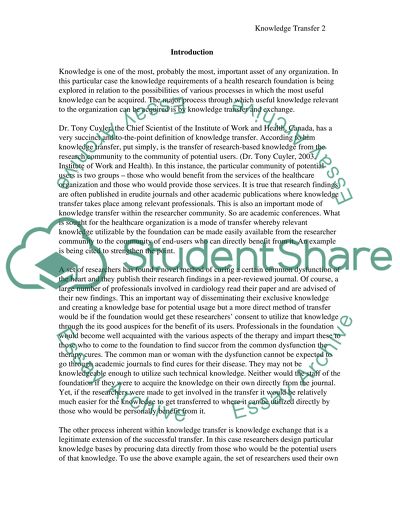Cite this document
(“Knowledge Transfer and Exchange Plan Essay Example | Topics and Well Written Essays - 2500 words”, n.d.)
Retrieved from https://studentshare.org/health-sciences-medicine/1529011-knowledge-transfer-and-exchange-plan
Retrieved from https://studentshare.org/health-sciences-medicine/1529011-knowledge-transfer-and-exchange-plan
(Knowledge Transfer and Exchange Plan Essay Example | Topics and Well Written Essays - 2500 Words)
https://studentshare.org/health-sciences-medicine/1529011-knowledge-transfer-and-exchange-plan.
https://studentshare.org/health-sciences-medicine/1529011-knowledge-transfer-and-exchange-plan.
“Knowledge Transfer and Exchange Plan Essay Example | Topics and Well Written Essays - 2500 Words”, n.d. https://studentshare.org/health-sciences-medicine/1529011-knowledge-transfer-and-exchange-plan.


